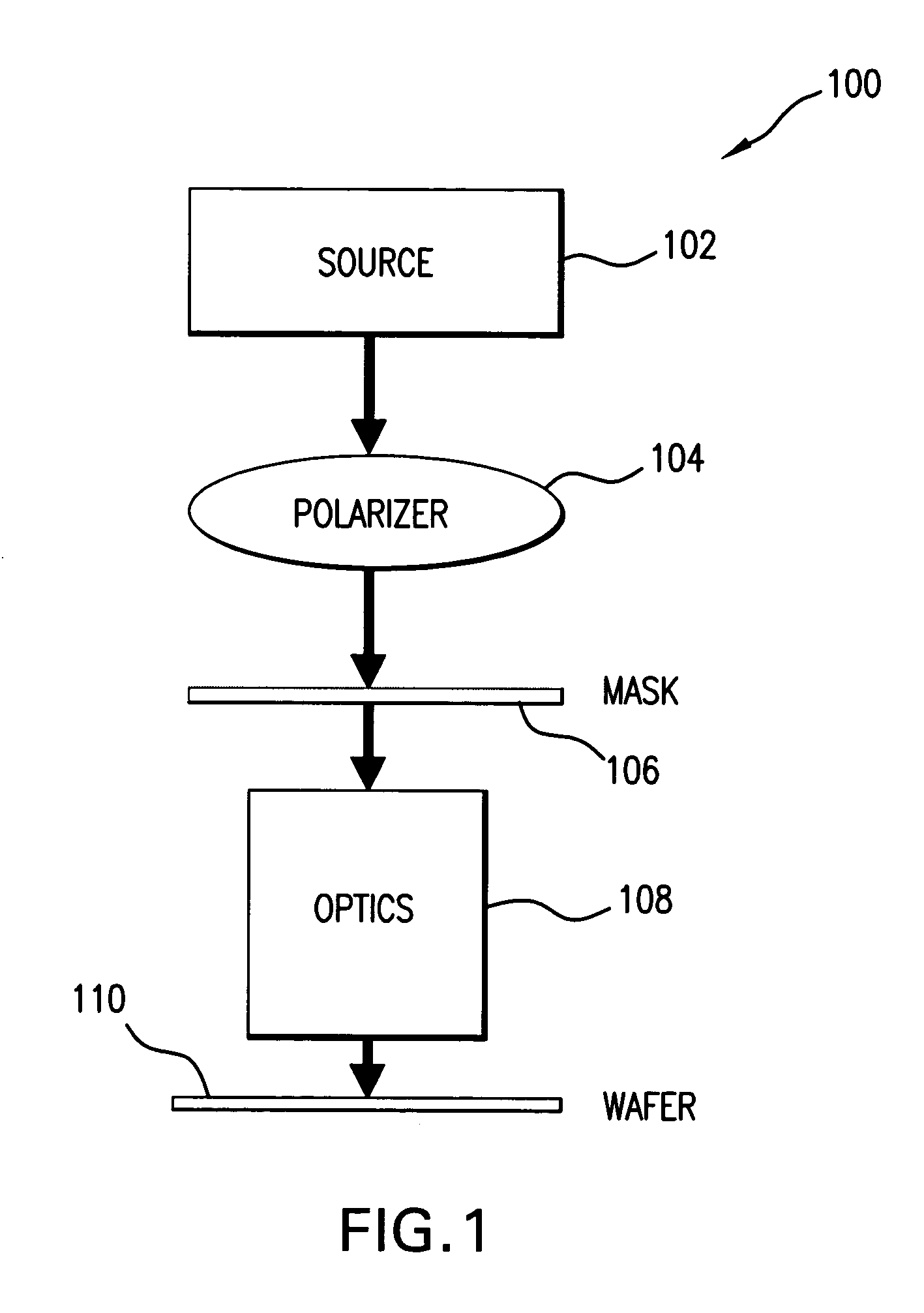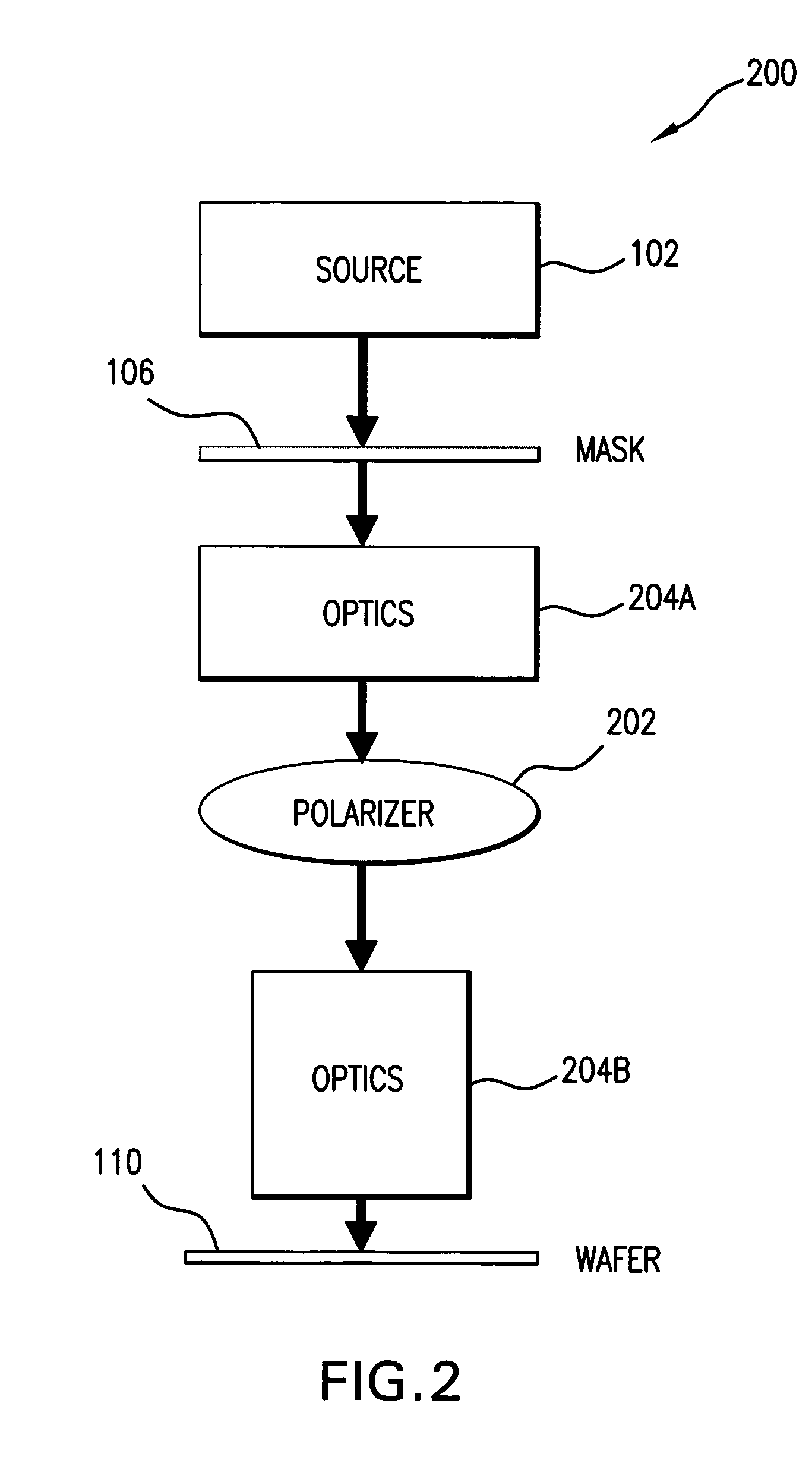Lithographic printing with polarized light
a polarized light and lithographic printing technology, applied in the field of high numerical aperture and immersion lithography, can solve the problems of difficult printing in low k applications, difficult fabrication of circuit features such as contact holes or vias, and difficult printing of high-contrast images of sufficient quality that includes contacts holes like contact arrays, etc., to achieve high image quality, improve printing, and high image quality
- Summary
- Abstract
- Description
- Claims
- Application Information
AI Technical Summary
Benefits of technology
Problems solved by technology
Method used
Image
Examples
Embodiment Construction
Table of Contents
[0041]1. Overall System[0042]2. Discussion and Simulation Results[0043]A. Introduction[0044]B. Resolution[0045]B.1. Theoretical resolution limits[0046]B.2. Resolution capability with off-axis illumination lithography[0047]C. Polarization[0048]C.1. Simulation Experiment[0049]C.2. Effect of Polarization on Image Quality[0050]C.3. Polarized light, Chromeless PSM, Negative photo-resist[0051]C.4. Radially polarized light, attenuating phase-shift masks or binary masks, and positive photoresists[0052]D. Polarization With Chromeless Alternating PSM[0053]D.1. Chromeless Alternating PSM In Conjunction With Radially Polarized Light, 100-nm Pitch Nested Contacts[0054]D.2. Through-Pitch Behavior, Chromeless Contacts With Radially Polarized Light[0055]D.3. Custom Polarization[0056]E. Immersion Lithography[0057]F. EUV
[0058]While specific configurations and arrangements are discussed, it should be understood that this is done for illustrative purposes only. A person skilled in the ...
PUM
| Property | Measurement | Unit |
|---|---|---|
| width | aaaaa | aaaaa |
| width | aaaaa | aaaaa |
| width | aaaaa | aaaaa |
Abstract
Description
Claims
Application Information
 Login to View More
Login to View More - R&D
- Intellectual Property
- Life Sciences
- Materials
- Tech Scout
- Unparalleled Data Quality
- Higher Quality Content
- 60% Fewer Hallucinations
Browse by: Latest US Patents, China's latest patents, Technical Efficacy Thesaurus, Application Domain, Technology Topic, Popular Technical Reports.
© 2025 PatSnap. All rights reserved.Legal|Privacy policy|Modern Slavery Act Transparency Statement|Sitemap|About US| Contact US: help@patsnap.com



